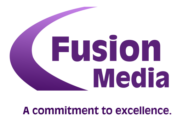
Press releases are the basics of PR management. But getting people to read them is far from being easy: journalists and bloggers often say they receive more and more of them, and that they don’t have the time to read them all. How can you maximise your chances? Here are a few tips that will help you write press releases that will stand out from the crowd.
Find a story that is really newsworthy
The first rule is: not all news is newsworthy. Always ask yourself: if I were a journalist, would I want to write a story about all this? If the answer is “no”, or “I don’t know”, then you probably shouldn’t write a press release. Use your blog or your social media accounts instead.
If you do have a piece of news that’s worth sharing, don’t forget to give your readers a few elements of context. Show them you have a clear idea of what your market is, where it is going, and how you fit in or differentiate. Let them understand what you are and what you do. If you want to include quotes, don’t quote your own employees. Instead, quote external, trusted sources (e.g. third-party surveys or studies).
All this will turn your press release into a well-documented piece of information that people might want to write about, or share on social media.
Be honest and realistic, you’re not writing an ad
Try to stick to the facts, and be honest about yourself. Not every company or product can be “the first”, “the best”, “the leader”, “revolutionary”, “innovative”, “next-generation”, etc. Superlatives are widely spread in press releases, but they’re not fooling anyone – they might even hurt your credibility.
Remember: you’re not selling anything; you’re publishing an interesting piece of information, in a (nearly) objective manner. Your press release shouldn’t read like an advertisement. If it does, start over.
Keep your press release short and concise
Let’s assume you have a story that’s newsworthy. How can you make sure people will read it? The first thing to remember is: your readers do have very little time on their hands. Lengthy press releases will scare them away. To avoid this, keep your press release short and concise – try to stick to a single, strong idea that your reader will identify from the very first lines.
The ideal length for a press release is 400 to 500 words. If your press release is shorter than that, you’re probably not giving enough details – a good press release always answers the “5 Ws”: who, what, when, where, why. On the contrary, if it’s longer than that, you’re probably repeating yourself, or giving too many details (e.g. too much background information, unnecessary, lengthy quotes, etc.). Make sure your press release is easy to read: stick to the essential.
Include a clear call to action
Your press release must contain a clear call to action. If it doesn’t, your readers might skip to something else, and simply forget about you. If you want to keep them hooked, tell them what’s next! There’s always a web page they can visit, a person they can contact for more information, a document they can download, an event they can subscribe to, etc.
Your press release should be the starting point of new relationship with your reader.
Write in a conventional, professional style
Your press release should be easy to read. Keep it conventional and professional. Write in the third person and keep your sentences clear and concise. Here’s a list of things you must eliminate:
- Jargon or overly technical language
- Funny punctuation and symbols
- SENTENCES IN ALL CAPS
- Whole paragraphs in bold characters
Finally, use a text editor to check for typos, misspellings and bad grammar, and proofread the final text a couple of times. Remember: no matter how interesting your story is, poorly written text will not seem trustworthy.
Provide relevant additional content
Press releases are not limited to plain, black and white text. Additional content will always enhance the overall reading experience. When relevant, do not forget to include:
- Your logo – so that journalists use a clean, official version
- Pictures – especially, high-quality photos of your products or services, or screenshots from your software or website
- Videos – which can be hosted on YouTube or any other platform
- Hyperlinks – which can point to pages from your own website.Also, such content will save journalists a whole lot of time when they decide to write something about you – and that’s something they’ll be grateful for. Help them help you!
Publish it yourself! (make good use of social media)
Don’t wait for journalists or bloggers to do all the work for you. Start by spreading the news to your existing friends and followers! Chances are you already have a few people reading your corporate blog, or following your Facebook Fan Page or Twitter account.
If you’re lucky, people might even share the news. After all, that’s what social media is for.
If you want a marketing partner that is passionate about helping you grow your business then get in touch. It’s what we’re best at.





